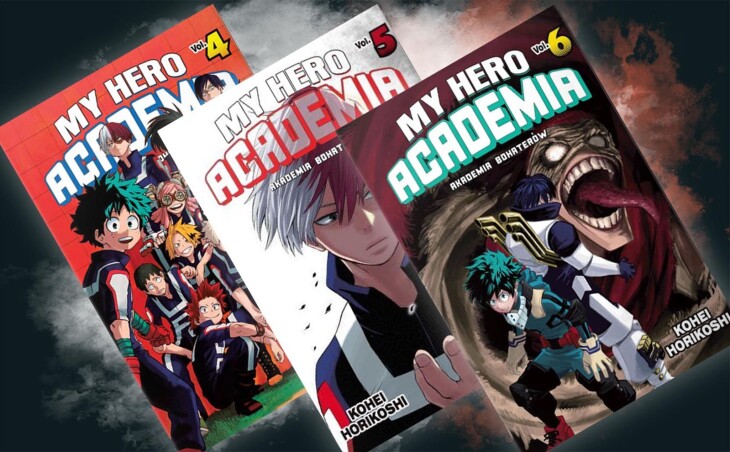The next three volumes of the adventures of Deku and Co. bring readers primarily the continuation of the topic of school professions and further expansion of the presented world. We learn more and more about students, superheroes, villains, and how a society functions where supernatural gifts are commonplace.
The annual games of UA High School students have started in the third volume of My Hero Academia . After the initial screening, the time has come for more competitions. Kohei Horikoshi once again showed off his creativity, telling his characters to take part in a team battle of “cavalrymen”, in which some participants act as “horses”, while others are “riders”. This form of the clash allowed for free and natural bringing to the fore a few students from other classes. The author not only showed the skills and motivations of the players, but also developed a bit of the relationship between them. Unfortunately, it is more clichéd and the last part of the competition takes the form of a martial arts tournament typical of mang shōnen .
Heroes inferior
The growing number of “extras” is also striking. Apart from Izuku and Katsuki, Ochaco and Ten’ya received the most extensive themes in these volumes. Shoto joined this group, whose dramatic history, indirectly related to All Might, sheds a slightly different light on the reality in which the superheroes and their relatives lived. Unfortunately, most high school students are only fillers. While the primary and secondary characters prepare for duels, talk to each other, we see the rest only in short scenes. It doesn’t help you get to know the rest of Class 1A, let alone the other characters. And there are still new ones, because after the Olympics it is time to start apprenticeships in superhero agencies.
What shōnen is like , everyone can see
I hope that this excess of attractions is simply due to the specifics of the genre, and not the author’s and editor’s lack of control over the content. Horikoshi is inventive, plays with convention and tries to be relaxed about his story, but he fails to avoid some of the shortcomings of adventurous manga for teenagers. Dozens of new characters introduced in each volume is one of them. The second is exposure through dialogues. The huge amount of speech bubbles devoted to explaining the rules of the presented world is overwhelming and at times becomes boring. Fortunately, the pace of the story, interesting fight scenes, and nice humor largely make up for these shortcomings.
The robe decorates the hero
The drawings at the Hero Academy still look very good. The author, assisted by a team of assistants, can wonderfully visualize the oversized world of superheroes and their powers. The skirmishes, which in this type of comics take up 90% of the space, are illustrated in an interesting, dynamic and legible way, although honestly I have not yet come across such iconic frames as I remember from Naruto (and it is worth noting that My Hero Academia describes itself as the successor to Masashi’s manga Kishimoto).
There are no objections to this edition. As in the previous volumes, Polish dialogues sound natural and jokes do not get lost in the translation (at least not noticeably). Print quality, additions between chapters and under covers – all this looks very good.
Honestly, I was not sure if I would reach for the next parts of My Hero Academia. Academy of Heroes . I don’t have much patience with youth manga focused on fighting anymore. However, Kohei Horikoshi’s story can pull you in, so I will probably be tempted by another portion. The more that the sixth volume ends, of course, with a cliffhanger .

